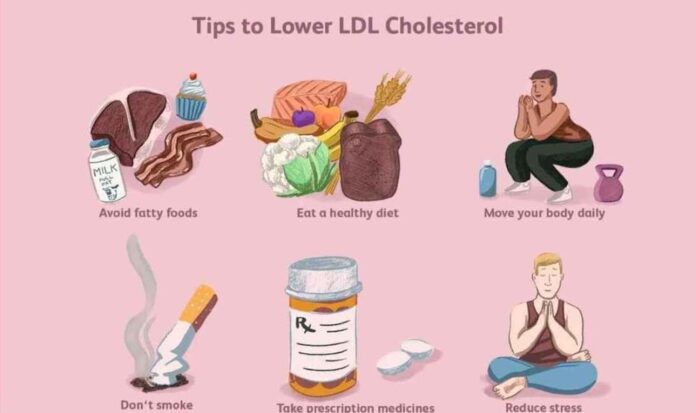
Discover thoughtful gift ideas for your loved ones, hosts, and family members. From personalized presents to cozy home decor and kitchen essentials, find the perfect way to show your gratitude .
Thanksgiving involves coming together with family and friends, contemplating the year’s blessings, and showing appreciation for those who are important to us. Although gift-giving is not a common practice during this holiday, many individuals still find joy in expressing gratitude with meaningful gifts, whether it be for the Thanksgiving dinner host or loved ones. If you need great gift ideas for Thanksgiving to make the holiday more special, we have everything you need.
In this manual, we will examine a range of gift options suited to various preferences, whether you seek a personal, comfy, or celebratory gift. Let’s explore the top Thanksgiving presents that will make a memorable impact on your family and friends!
Gift Ideas for the Host or Hostess
It is a thoughtful gesture to bring a gift for the host or hostess when attending a Thanksgiving dinner or gathering to express your appreciation. Below are a few considerate gift suggestions for individuals who are hosting the gathering:
Personalized Kitchenware:Customized products result in thoughtful presents that endure over time. Think about gifting a personalized cutting board, apron, or collection of wine glasses with a monogram. These gifts not only have a useful function but also bring a unique touch to the host’s kitchen.
Scented Candles: Autumn-scented candles like pumpkin spice, cinnamon apple, or clove can set a cozy and welcoming mood in any household. Select a high-grade, durable candle as a demonstration of your consideration.
Wine or Craft Beer: A bottle of wine, craft beers, or flavored sparkling water or cider can enhance the flavors of the Thanksgiving dinner. Choose a high-quality bottle or opt for something distinct, such as a regional wine or beer, to add a special touch.
Gourmet Gift Baskets: A luxurious gift basket packed with high-quality chocolates, cheeses, preserves, and other gourmet treats is an excellent way to express gratitude to the host. You have the option to select a Thanksgiving-themed basket full of fall goodies like caramel popcorn, roasted nuts, and dried fruits.
Fresh Flowers or Potted Plants: A lovely arrangement of flowers that are in season or a potted plant with a fall theme, such as mums or a small pumpkin centerpiece, can enhance the host’s home and contribute to the celebratory ambiance.
Thanksgiving Gift Ideas for Family and Friends
Thanksgiving revolves around family and unity, and meaningful presents are a wonderful way to show gratitude for your loved ones. Below are some suggestions for presents that will bring joy to your family and friends during the festive period:
Gratitude Journals: Writing in a gratitude journal can help cultivate a habit of gratitude throughout all seasons. Select an exquisite, well-made notebook with writing cues to stimulate regular contemplation on the blessings cherished by your family members. This thoughtful present encourages positivity and mindfulness.
Personalized Family Gifts: Customized presents like a personalized family photo frame or a photo book are an excellent way to honor family connections. A personalized calendar featuring family photos or a family tree design can also serve as a unique memento.
Cozy Blankets or Throw Pillows: When the temperature drops, consider giving your loved ones cuddly presents such as fleece blankets, plush throws, or soft throw pillows to keep them warm and cozy. Search for fall-inspired patterns such as pumpkins, autumn leaves, or natural colors to connect with the Thanksgiving season.
Home Baked Goods: If you like baking, giving homemade treats such as pumpkin bread, apple pies, or cookies can be a sincere and caring gift. Wrap them in attractive containers and think about including a heartfelt message to express your gratitude.
Board Games or Puzzles: Board games or puzzles are ideal for post-dinner entertainment as a gift suitable for the whole family. Select a game or puzzle with a Thanksgiving or autumn theme that is enjoyable for all. These presents promote spending quality time and creating enjoyable bonding experiences.
Thanksgiving Gift Ideas for the Kitchen and Dining Table
Thanksgiving revolves around meals, and a lot of us dedicate time to preparing and savoring food with loved ones. Giving kitchen and dining gifts is a great way to enhance the celebration or give a long-lasting present to someone special.
Elegant Serving Platters and Bowls: A chic serving dish or bowl can enhance the presentation of the Thanksgiving feast. Search for items with fall-themed patterns, or choose a traditional, everlasting platter that can be utilized for upcoming events.
Thanksgiving Gift Ideas-Themed Cookbooks: A cookbook featuring Thanksgiving-themed recipes or seasonal dishes can spark inspiration for those who love cooking. Many cookbooks are dedicated to fall recipes, ranging from classic Thanksgiving dishes to creative autumn-inspired meals.
Gift Ideas: Specialty Spice Blends: Assist the home cook in your life by enhancing their meals with high-quality spice mixes or flavored oils. Autumnal tastes such as cinnamon, nutmeg, and rosemary can enhance a variety of dishes, including roasted vegetables and baked goods. Combine this with a lovely spice rack or an oil and vinegar set for an ideal present.
Tea Towels and Napkins: Quality Thanksgiving-themed tea towels or napkins can be a charming addition to the dining table. Select festive autumn-themed patterns with pumpkins, leaves, or harvest designs.
Gift Ideas for Kids: Fun and Educational Ideas
If you’re celebrating Thanksgiving with kids, there are many enjoyable gifts suitable for their age to keep them entertained and engaged on the holiday. These presents can enhance the holiday spirit and offer kids with hours of amusement.
Thanksgiving Craft Kits: Craft kits with a Thanksgiving theme enable children to showcase their creativity during the festive season. Search for craft kits that include creating turkeys, pumpkins, or other autumn-inspired ornaments. These kits are ideal for a family project over the holiday weekend.
Storybooks: Books related to Thanksgiving, appreciation, or autumn can be a wonderful present for kids. Search for beautifully illustrated children’s books that center on themes of gratitude, family customs, or autumn harvest.
Personalized Stuffed Animals: A special gift is a personalized stuffed animal or blanket with the child’s name that is soft and cuddly. It’s a memory they can treasure well beyond Thanksgiving.
Charitable Gifts: Giving Back This Thanksgiving
If you want to make a positive difference with a gift, think about donating to a charity on behalf of someone. This is a significant method to promote kindness and impact the lives of others positively.
Donation to a Favorite Cause: Numerous entities permit individuals to make donations in the name of another person. Select a charitable organization that reflects the values of the recipient, such as a food bank, environmental group, or veterans’ association, and provide a meaningful donation in their name.
Adopt an Animal: Certain animal organizations provide opportunities for individuals to symbolically adopt an animal and receive a certificate of adoption. This gift is one of a kind and considerate for people who love animals.
Thoughtful Thanksgiving Gift Ideas for Every Budget
Thanksgiving is an ideal time to express appreciation to the individuals who are most important in your life. When choosing a gift, it’s important to consider the recipient- whether it’s for a Thanksgiving host, family member, friend, or charity- as heartfelt gifts are the most meaningful. Don’t forget to center your attention on thoughtfulness and personal touches, and your Thanksgiving presents will leave a lasting impact.
By taking into account the preferences and hobbies of your gift recipient, you can discover the ideal present that celebrates Thanksgiving and shows your gratitude. These gifts, whether they are cozy home decor, personalized kitchenware, or a donation to a cause, will enhance the holiday experience










